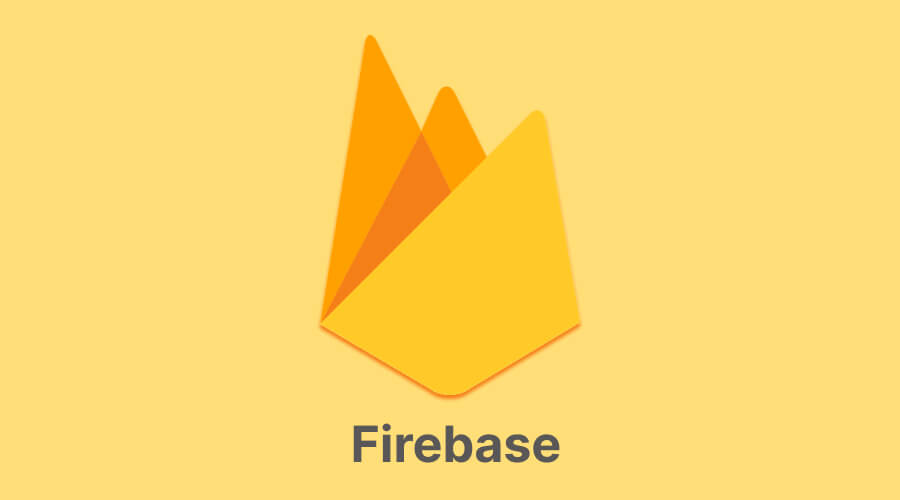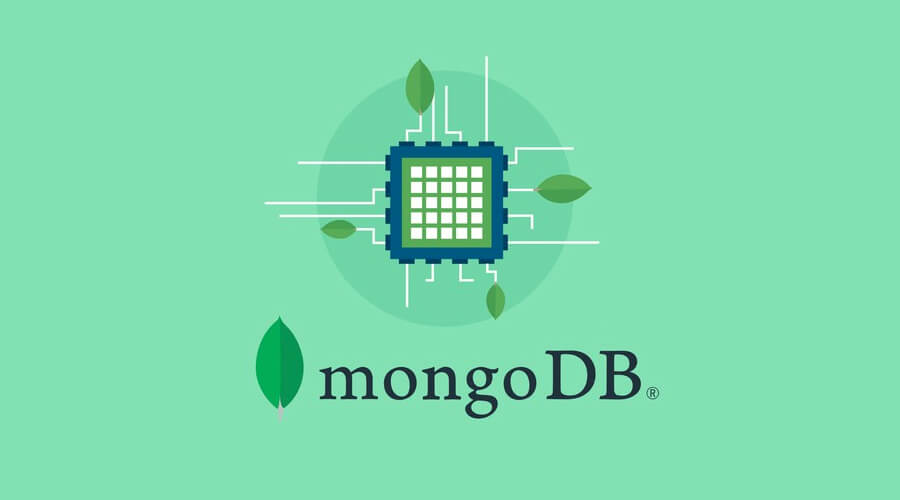
MongoDB vs Firebase ever-evolving landscape of modern software development, the choice of a database is akin to selecting the foundation for a skyscraper—it forms the bedrock upon which your entire project stands. A hasty decision can lead to structural instability, whereas a well-informed choice can set the stage for success. This blog aims to study two stalwarts of the database world: Firebase and MongoDB.
These two renowned database options offer distinct strengths and cater to diverse application needs. Our aim is precise—to comprehensively dissect and compare Firebase and MongoDB, equipping you with the knowledge needed to make the right choice for your next project. So, let’s dip in and crack the details of these robust database solutions.
What is Firebase?
Firebase is a robust and versatile platform for developing mobile and web applications. It is a one-stop solution for developers, offering many tools and services to simplify the app development process. Firebase’s hallmark feature is its real-time database, which enables developers to create responsive, dynamic applications that instantly synchronize data across users and devices.
Also, check here the list of the best free database software that you can use for your app development projects.

Beyond real-time capabilities, Firebase offers authentication, hosting, cloud functions, and Firestore, a NoSQL database option. Firebase’s integration with other Google services and user-friendly interface make it a popular choice for startups and developers looking to expedite their development cycles while maintaining high-quality user experiences.
Key Features of Firebase
- Real-time Database: Firebase’s real-time database is the crown jewel of its services. It allows developers to build applications that instantly sync and update data across all connected devices, making it ideal for chat apps, collaborative tools, and live dashboards.
- Authentication: Firebase simplifies user authentication by providing secure and easy-to-implement sign-up and login methods. Authentication options include email/password, social media logins, and single sign-on (SSO) options.
- Hosting: Firebase Hosting offers a scalable and reliable solution for deploying web applications, static content, and dynamic assets. It provides a content delivery network (CDN) for fast and secure delivery to users globally.
- Cloud Functions: Firebase Cloud Functions permit developers to extend their applications with serverless, event-driven functions. This enables the execution of custom code in response to events like database changes, HTTP requests, or authentication triggers.
- Firestore (NoSQL Database Option): Firestore is Firebase’s NoSQL document database, designed to integrate with Firebase services seamlessly. It offers flexible data modeling, robust querying capabilities, and offline support, making it suitable for various mobile and web applications.
Pros and Cons of Firebase
Pros
- Real-time Updates: Firebase excels in real-time data synchronization, making it perfect for applications that require instant updates across devices, such as chat apps and collaborative tools.
- Scalability: Firebase’s infrastructure scales effortlessly, handling traffic spikes and growing user bases without requiring extensive manual configuration.
- Integration with Other Firebase Services: Firebase offers a range of services that integrate seamlessly. This cohesive ecosystem simplifies development, reducing the need to stitch together various third-party tools.
- Authentication and Security Features: Firebase provides robust authentication options and built-in security features, helping developers implement user management and data protection quickly.
Cons
- Limited Querying Capabilities: Firebase’s real-time database, while powerful, has limitations when it comes to complex queries. This can be challenging for applications with intricate data retrieval needs.
- Vendor Lock-In: Firebase ties you to Google’s ecosystem, which might limit your flexibility to switch to other platforms or databases in the future. Migrating away from Firebase can take time and effort.
- Pricing Considerations: While Firebase offers a free tier, costs can escalate as your application grows, especially if you have a large user base or high data transfer and storage requirements. It’s essential to plan your usage carefully to avoid unexpected expenses.
When to Choose Firebase
- Real-time Collaboration Apps: Firebase is an excellent choice for applications that require real-time data synchronization, such as chat applications, collaborative document editing tools, or multiplayer games. Its real-time database capabilities facilitate instant updates and communication among users.
- Mobile and Web Applications with Simple Data Structures: Firebase is well-suited for projects with straightforward data models, where complex querying is not a primary concern. This makes it ideal for applications like social media platforms, event apps, or news aggregators.
- Prototyping and MVP Development: For rapid prototyping and minimum viable product (MVP) development, Firebase offers a quick and efficient way to build functional applications. Its integrated services streamline the development cycle, allowing teams to concentrate on core elements.
- Projects with Limited Development Resources: Firebase’s ease of use and ready-made solutions make it an excellent choice for small teams or solo developers with limited resources. It eliminates the need for managing complex server infrastructure and allows developers to concentrate on building the application itself.
Examples of Successful Projects Using Firebase
Real-time Chat Applications:
- WhatsApp: One of the globe’s most famous messaging apps relies on Firebase’s real-time database to synchronize instant messages across devices.
- Slack: Slack’s real-time chat and collaboration platform leverages Firebase’s capabilities to enable seamless communication among teams worldwide.
Mobile Games with Leaderboards:
- Crossy Road: This popular mobile game uses Firebase to implement global leaderboards, allowing players to compete and compare their scores in real-time.
- Fruit Ninja: Firebase’s real-time database powers the leaderboard feature in Fruit Ninja, creating a competitive gaming environment for users to engage with.
Firebase’s real-time capabilities shine in applications that need instant updates and collaboration, making it a top choice for these dynamic use cases.
What is MongoDB?
MongoDB is a leading NoSQL, document-oriented database system designed for flexibility, scalability, and high performance. Unlike traditional relational databases, MongoDB uses flexible, JSON-like documents, making it easy to handle dynamic and evolving data structures. It is an open-source platform that offers powerful querying capabilities, horizontal scalability, and robust community support.

MongoDB is ideal for applications dealing with unstructured or semistructured data, such as content management systems, IoT platforms, and data analytics tools. Its ability to distribute data across clusters and support ACID transactions (starting from version 4.0) makes it a versatile and reliable database solution for many use cases.
Key Features of MongoDB
- Flexible Schema: MongoDB’s document-oriented data model allows for a flexible schema, enabling developers to store data with varying structures in the same database. This adaptability is especially advantageous for projects with evolving data requirements.
- Rich Querying Capabilities: MongoDB offers robust querying and indexing capabilities, efficiently retrieving and analyzing data. It supports complex queries, including filtering, sorting, and aggregation, empowering developers to access data with precision.
- Horizontal Scalability: MongoDB’s architecture is designed for horizontal scalability, which means you can scale out by adding more servers or clusters to handle increased workloads. Due to this, it is well suited to applications with growing data volumes and high traffic.
- Strong Community Support: MongoDB benefits from a large, engaged community. This translates into abundant resources, tutorials, and third-party tools for development, troubleshooting, and optimization.
- ACID Transactions (MongoDB 4.0+): From version 4.0, MongoDB introduced support for ACID (Atomicity, Consistency, Isolation, Durability) transactions. This ensures data integrity and consistency in scenarios requiring multi-document transactions, such as financial applications and e-commerce platforms.
Pros and Cons of MongoDB
Pros
- Flexible Data Modeling: Due to MongoDB’s document-oriented approach, data models can be changed dynamically, accommodating changes in data structures without significant disruptions.
- Scalability and High Performance: MongoDB handles large datasets and high read/write loads. Its horizontal scaling capabilities make it suitable for applications with growing demands.
- Powerful Query Language: MongoDB provides a versatile query language, including advanced features like aggregation pipelines, geospatial queries, and text search, enabling complex data retrieval and analysis.
- Open-source and Well-documented: MongoDB is open-source and supported by comprehensive documentation, a vibrant user community, and a wealth of educational resources, making it accessible to developers worldwide.
Cons
- Setup and Maintenance Complexity: Configuring and maintaining MongoDB clusters can be complex, especially for those new to NoSQL databases. Proper setup and management require a good understanding of database administration.
- Lack of Built-in Real-time Capabilities: MongoDB does not natively support real-time data synchronization, unlike other databases (e.g., Firebase). Implementing real-time features may require additional tools or services.
- Steeper Learning Curve for Some Users: MongoDB’s data model and query language may pose a steeper learning curve for developers accustomed to traditional relational databases. Mastery of its unique features and best practices may take time and effort.
When to Choose MongoDB
- Complex Data Structures and Relationships: MongoDB excels with intricate data models and relationships. MongoDB’s flexible schema and rich data modeling capabilities are advantageous if your application requires storing data with varying structures or extensive nested documents.
- Large-Scale Applications with High Traffic: MongoDB’s horizontal scalability and high-performance characteristics make it a robust choice for large-scale applications facing high user traffic. It can handle the demands of content-heavy websites, e-commerce platforms, and popular online services.
- Data Analytics and Reporting Requirements: MongoDB is well-suited for applications that perform complex data analytics and generate reports. Its powerful querying and aggregation capabilities enable efficient data analysis, making it valuable for business intelligence and decision support systems.
- Projects Requiring Advanced Querying and Indexing: MongoDB provides sophisticated querying and indexing features, allowing developers to fine-tune data retrieval and optimization. This makes it ideal for projects with advanced querying needs, such as geospatial queries, full-text search, and customized aggregations.
Examples of Successful Projects Using MongoDB
Content Management Systems:
- WordPress: MongoDB’s flexible schema and scalability have been harnessed in the form of plugins to store content data, enhancing the performance of WordPress websites.
- Adobe Experience Manager (AEM): AEM uses MongoDB as a backend database to manage and deliver content across various digital channels.
IoT Applications with Large Sensor Data:
- Bosch IoT Suite: MongoDB is utilized in Bosch’s IoT Suite to store and manage massive volumes of sensor data from IoT devices. Its scalability ensures seamless handling of data streams from diverse sources.
- Smart Home Automation: MongoDB is an ideal choice for smart home systems that collect and process data from sensors, thermostats, and security cameras, ensuring real-time responsiveness and analytics.
Enterprise-level E-commerce Platforms:
- Alibaba: MongoDB is employed by Alibaba, one of the world’s largest e-commerce platforms, to handle the extensive product catalog and user data. It provides the flexibility to adjust to growing business demands.
- Etsy: MongoDB supports the scalability and data modeling requirements of Etsy’s e-commerce platform, managing product listings, user profiles, and order history.
MongoDB’s ability to manage complex data structures, scale horizontally, and facilitate high-performance querying makes it a valuable asset for these diverse and data-intensive projects.
mongodb vs. firebase – Which is the best
Comparing MongoDB and Firebase eventually relies on your project’s precise needs. There is no one-size-fits-all answer, as each database has strengths and weaknesses. Here’s a concise comparison:
Choose MongoDB if:
- You have complicated data structures and relationships.
- Your application is expected to handle high traffic and scale horizontally.
- Data analytics and reporting are integral to your project.
- You need advanced querying and indexing capabilities for specialized use cases.
- Vendor lock-in is a concern, and you prefer an open-source solution.
Choose Firebase if:
- Real-time data synchronization is crucial for your application.
- Your project has simple data structures and doesn’t require complex querying.
- You’re prototyping or building an MVP quickly.
- You need more development resources and want a streamlined development process.
- Integration with other Firebase services (authentication and hosting) aligns with your needs.
The choice between MongoDB and Firebase hinges on your specific project’s requirements, the development team’s familiarity, and scalability considerations. It’s essential to evaluate these factors carefully before making a decision.
Conclusion
In database choices, the mongodb vs. firebase debate underscores the importance of selecting the right tool for your specific project needs. MongoDB excels in handling complex data structures, catering to applications with substantial data volumes, and supporting advanced querying. On the other hand, Firebase shines in scenarios requiring real-time updates, simplicity of use, and rapid prototyping.
Ultimately, the choice hinges on your project’s unique demands, scalability requirements, and the development team’s familiarity. MongoDB offers robustness for data-intensive projects, while Firebase’s real-time capabilities make it a go-to for interactive and collaborative applications. Whether you opt for MongoDB or Firebase, thoroughly evaluating your project’s objectives and constraints is the key to a successful database selection.






